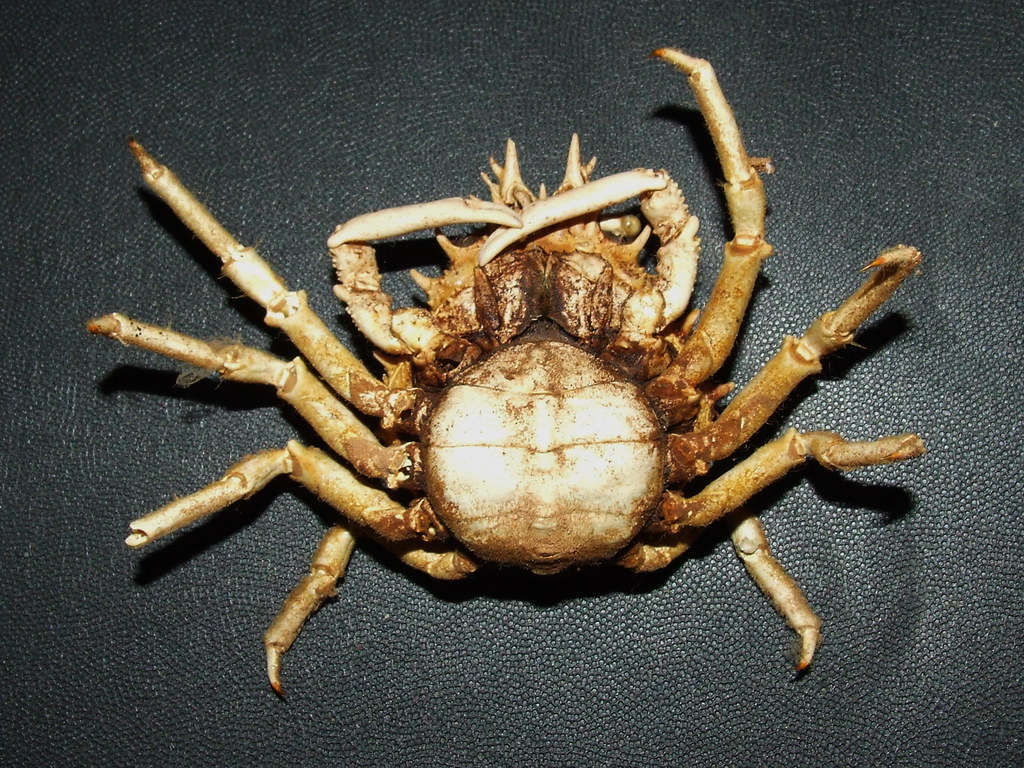In early August 2022, an extraordinary natural event unfolded on the shores of St Ives, Cornwall, UK, as thousands of common spider crabs (also known as spiny spider crabs, Maja brachydactyla) appeared remarkably close to the beach. This spectacular sight, however, quickly became the subject of sensational and misleading media headlines, with many outlets erroneously labeling the crabs as “venomous.” This article aims to clarify the facts about these fascinating crustaceans and encourage a more accurate understanding of marine life.
Understanding the Common Spider Crab
Common spider crabs are large, orange-hued crustaceans characterized by their long, slender, spider-like legs. Often, their bodies are adorned with algae, sponges, and other marine debris, giving them a unique, slightly fluffy appearance. These crabs inhabit the East Atlantic coast, ranging from the British Isles down to West Africa, and can be found on various seabed types, including rocky, sandy, or muddy substrates, at depths exceeding 100 meters. Juvenile spider crabs prefer shallower waters before migrating offshore as adults.
Why Do They Gather in Such Large Numbers?
The massive aggregations witnessed in Cornwall are a natural phenomenon. Mature spider crabs undertake an annual summer migration into shallower waters to molt their tough exoskeletons. During this vulnerable period, they shed their hard outer shells to grow. The “safety in numbers” strategy allows them to protect themselves from predators. Crabs on the outer edges of these gatherings typically retain their hard shells, while those on the inside are in the process of molting, making their new shells soft, akin to the texture of a hard-boiled egg. This soft state makes them particularly susceptible to predators. Opportunistically, males also use this time to mate with the still-soft females. The St Ives event was a perfect example of one of these enormous, protective gatherings.
Debunking the “Venomous” Myth
Despite alarming headlines, spider crabs are not venomous. In fact, no known species of crab, lobster, or shrimp possesses venom. The only recorded venomous crustacean is a rare, cave-dwelling species of remipede. The claim of “venomous” spider crabs is a clear example of misinformation that can be detrimental to public perception of marine ecosystems.
Tom ‘The Blowfish’ Hird, a renowned marine biologist, broadcaster, and author, emphasizes the importance of accurate reporting: “These aggregations are truly magnificent sights, and people should be encouraged to go and see them, especially when they are so accessible and close to shore. Misconceptions about the oceans can harm an environment that right now needs our protection and affection.”
Are Spider Crabs a Threat to Humans?
With a carapace (body) length of up to 20 centimeters, common spider crabs are not insignificant in size. However, they pose absolutely no threat to humans. They are scavengers, feeding on algae and invertebrates found on the seabed, which they break up with their claws.
The Cornwall Wildlife Trust notes that these spider crab aggregations, while impressive, used to be relatively rare in the UK. The particularly large gathering observed last summer highlights the dynamic nature of marine ecosystems. The Trust actively encourages the public to report any sightings of these fascinating creatures online, contributing to a better understanding and protection of our marine environment.
The appearance of thousands of spider crabs in Cornwall was a natural wonder, offering a unique glimpse into the intricate lives of these marine animals. By understanding the truth behind such events, we can foster a greater appreciation for the ocean and its diverse inhabitants, moving beyond sensationalism to promote conservation and education.

